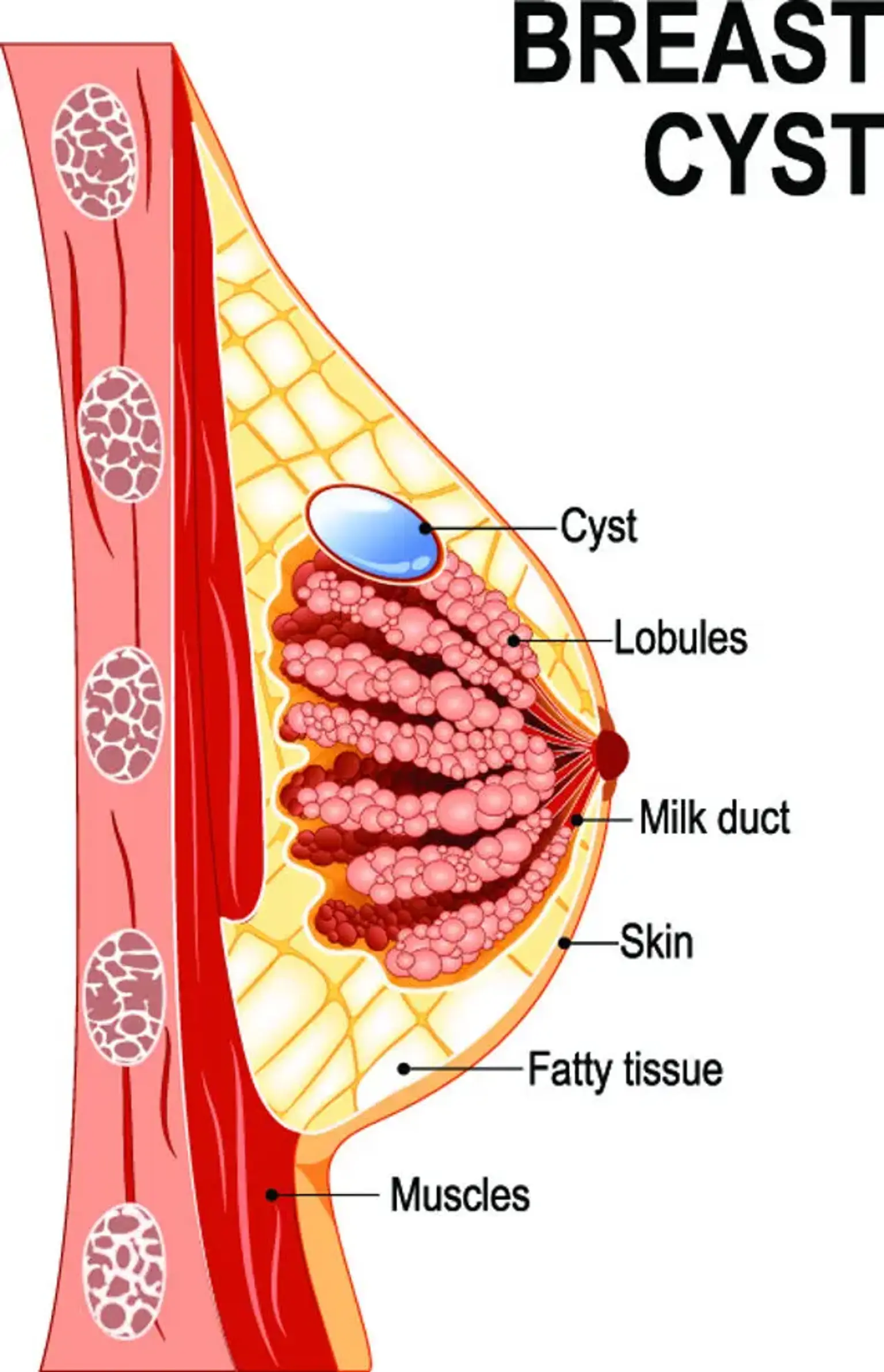Breast cyst
A breast cyst is a fluid-filled sac that forms within the breast. It is normally benign or noncancerous, and one can have a single or numerous cysts. Generally, a breast cyst feels like a grape or a water-filled balloon in most cases, and it can sometimes be hard.
Breast cysts can affect women of any age, but they're more common in those below 50 (before menopause). They are also frequent among postmenopausal females on hormone therapy. Unless a breast cyst is huge, painful, or uncomfortable, it does not need treatment. In this scenario, fluid draining from the breast cyst might help to alleviate the symptoms.
